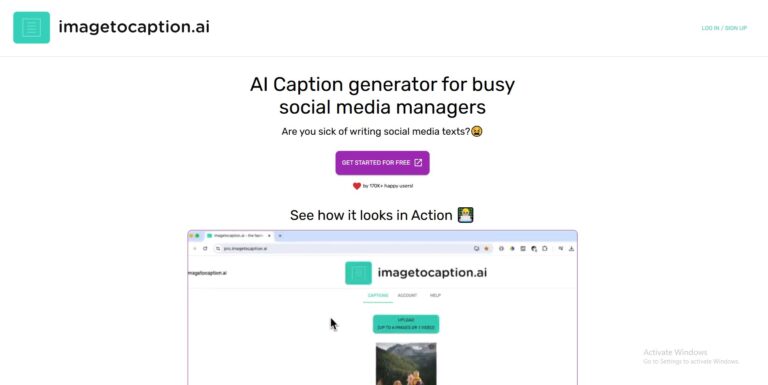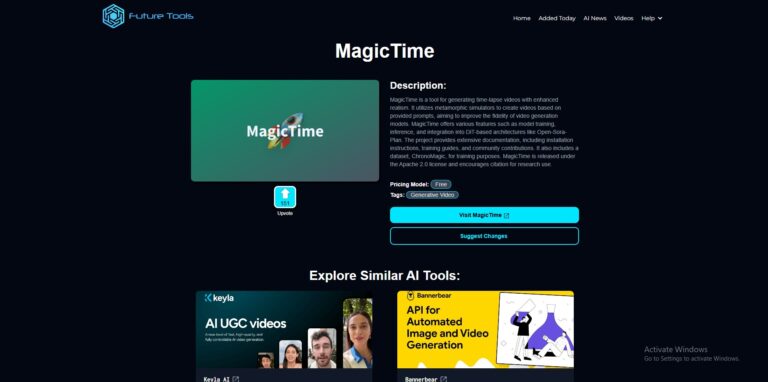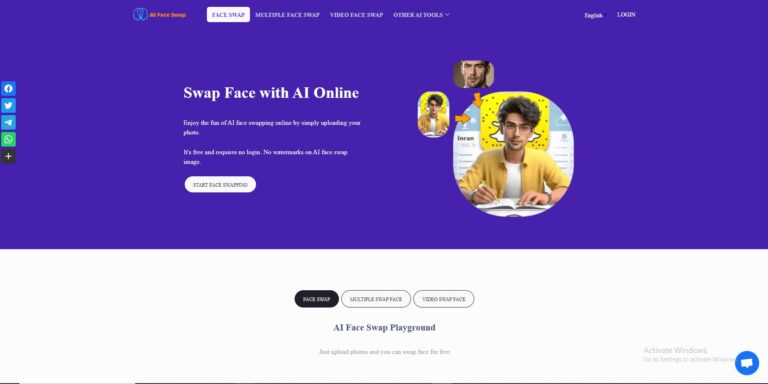Nowadays, students and researchers encounter a vast amount of academic information daily due to the internet. Looking through scientific journals, papers presented at conferences or PDFs with technical details now takes much longer than before. Now, let me introduce OpenRead AI, which utilises AI to make reading, understanding, and managing papers easier and more effective.
The article focuses on what makes OpenRead AI special, its strengths and weaknesses, typical situations it is used for and similar tools. If you are a student, researcher or academician, the overview here will help you find out if OpenRead AI is suitable for your research work.
What is the meaning of OpenRead AI?
OpenRead AI makes reading and understanding academic papers quicker and simpler for its users. Thanks to natural language processing (NLP), machine learning and GPT-style AI, users can quickly learn from and communicate with the system.
OpenRead allows you to do more than open PDFs since it makes papers interactive and easily annotated. OpenRead features such as AI summarisation, mind maps and citation navigation, which allow people to read more effectively. It proves very useful for students, researchers, educators and others who deal with lots of research.
The Important Parts of OpenRead AI
OpenRead AI is not just a PDF reader or a citation manager, but is a whole lot more. These features are the main characteristics of this approach:
1. The use of AI-enabled tools in Paper Q&A.
You can ask a question about a paper, and the AI gives you an answer that fits the context of the paper. Thanks to GPT-4 and other large language models, the chatbot can describe the process, make sense of outcomes and simplify essential parts of data into plain language.
2. Mind Map Navigation
Studying long and complicated research can seem difficult. OpenRead addresses this by mapping how the paper is constructed with an interactive mind map. You can tell how each part (abstract, methods, results, discussion, etc.) relates, which helps you move easily through the paper and understand it better.
3. AI Summarisation
All parts of your paper can be summarised very quickly. Overall summaries can be written, or you might narrow your focus to specific sections such as the methodology or ending. It allows researchers to look through papers to see if they are relevant to their needs.
4. Citation and Reference Explorer
OpenRead AI detects and links the research papers cited. Pressing the reference button will open the summary or complete paper. Using this feature is great during literature reviews and for keeping up with relevant research.
5. Being able to annotate and make notes on a PDF is very helpful.
You are able to highlight, add your notes and share annotations with your team in the workspace. Every note is spotlighted and available for export in order to bring them into your research or shared work.
6. Multi-Paper Comparison
You can quickly review many papers simultaneously with OpenRead. It helps a lot when comparing different methods, analysing findings that disagree or putting together a review paper.
7. Library and Cloud Sync apps
Users are able to sort their papers into customised libraries. Your cloud storage contains all your documents, notes and highlighted passages, which are then synced so you can use them on any device.
Advantages of Using OpenRead AI
A lot of students, PhD candidates and seasoned researchers are finding OpenRead AI a useful tool. This is why creating a structure can be very beneficial:
1. Saves Time and Effort
It can take a long time to get through and understand a research paper. A paper that requires careful reading and effort to understand can be quickly summarised and completed using OpenRead.
2. Enhances Understanding
With GPT technology, the chatbot can explain complicated terms, laboratory experiments or numerical expressions. It gives you the feeling that you have access to an online tutor or assistant anytime.
3. Improves Literature Reviews
With its tools for comparing papers, handling citations and making summaries, OpenRead is ideal for putting together and handling literature reviews.
4. Boosts Research Productivity
Because OpenRead simplifies citation tracking, highlighting and organising notes, it makes research more efficient.
5. Beginner-Friendly
OpenRead AI simplifies difficult academic topics for people new to the subject. This makes it easier for people to get into specific areas of work.
6. Promotes Doing Research Together
If notes and annotations are accessible to the entire group, research projects among team members become easier.
7. Free Plan Available
You can use the free version, which has strong features such as mind maps, summarisation and Q&A, for simple research tasks.
Disadvantages of OpenRead AI
Even with its strong features, OpenRead AI has some limitations as well.
1. Accuracy Limitations
Like with all AI, there is a possibility that OpenRead is misunderstood. There is a chance that it will occasionally get some explanations or solutions wrong, and not understand every type of equation.
2. Works Best with Scientific Papers
Scientific and technical writing is the main focus of the tool. Because interpretation in the humanities or arts is often intricate, the role of statistics might be less important.
3. PDF-Only Support
At present, PDF files are the files that OpenRead supports. If the files are in Word or some other format, you have to convert them before proceeding.
4. Calls for access to the Internet.
Using OpenRead through the cloud means it requires a strong internet connection to work with the chatbot and access the cloud library.
5. Privacy Concerns
Giving access to unpublished or sensitive content to a third party is often a risky move, mainly because of privacy and intellectual property issues found in competitive academic fields that are competitive.
6. Offline functions are not very broad.
There are limited features you can use offline, and this can be problematic in places with bad internet, like fieldwork or rural libraries.
Who Can Benefit from OpenRead AI?
People who review academic literature frequently will find OpenRead AI useful.
1. Students at universities: Suitable for making complex coursework clearer and for saving time on assignments.
2. Graduate researchers are experts at doing quick and complete reviews of the literature.
3. Educators: Support the development of lectures and pick suitable material for students.
4. A way that scientists and analysts can quickly understand research papers as soon as they are published.
5. People writing articles or creating reports: The Casual Style Guide helps extract the main insights from technical documents.
How to Begin Using OpenRead AI
It is very easy to begin using OpenRead.
1. Go to the website: https://openread.io
2. Register: Set up a new account with your email or a Google account.
3. Drop your PDF file into CreateWriter or import it from an academic database.
4. Make use of the mind map, chatbot and summarizer to examine the scientific paper.
5. Keep and sort: Add marks to the text, take notes and put documents in your library.
6. Create more than one document and put them beside each other to compare or review them together.
Alternatives to OpenRead AI
While OpenRead is one of the top contenders in academic AI tools, there are several alternatives:
| Tool | Key Features | Best For |
| Scholarcy | Fast summarisation, metadata extraction | Quick summaries, basic review |
| Scite.ai | Citation context (supporting, contradicting) | Measuring research impact |
| Research Rabbit | Citation mapping and visualisation | Discovering related literature |
| Zotero + Plugins | Reference management + some AI features | Organising citations and papers |
| EndNote | Bibliography generation, reference tools | Formal academic publishing |
Final Thoughts:
OpenRead AI brings advanced AI technology to students and researchers. It makes reading and handling big academic papers easier and faster, helping everyone understand and apply them more effectively. Preparing for an exam, writing a thesis or doing groundbreaking research can be helped by OpenRead AI because it organises the information and saves you time.
Although AI accuracy and not being online might be issues for some, most users still feel that the pros outshine the cons. Due to powerful features and aesthetic ease of use, I would highly encourage anyone focused on their studies to try OpenRead AI.




